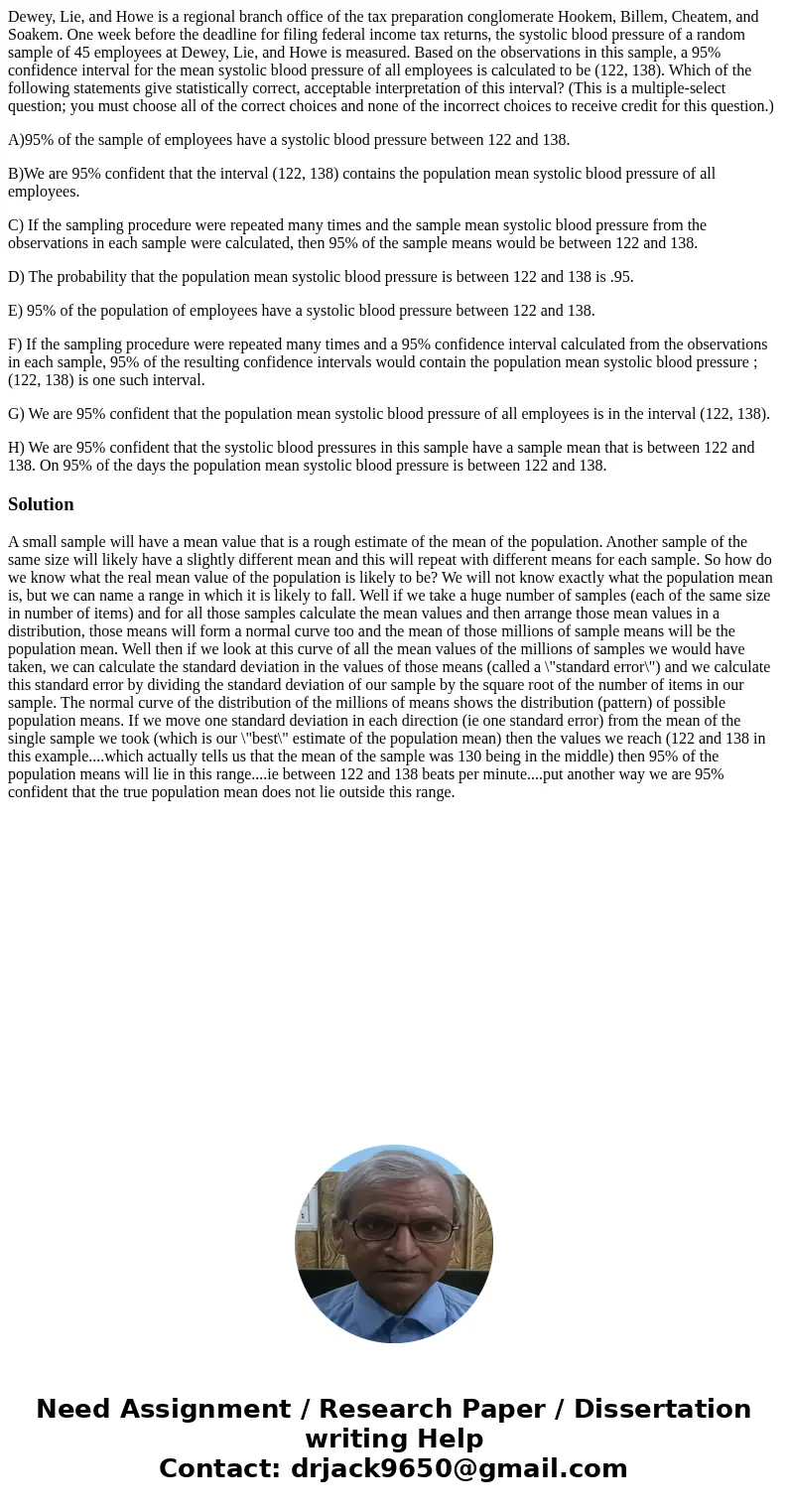Dewey Lie and Howe is a regional branch office of the tax pr
Dewey, Lie, and Howe is a regional branch office of the tax preparation conglomerate Hookem, Billem, Cheatem, and Soakem. One week before the deadline for filing federal income tax returns, the systolic blood pressure of a random sample of 45 employees at Dewey, Lie, and Howe is measured. Based on the observations in this sample, a 95% confidence interval for the mean systolic blood pressure of all employees is calculated to be (122, 138). Which of the following statements give statistically correct, acceptable interpretation of this interval? (This is a multiple-select question; you must choose all of the correct choices and none of the incorrect choices to receive credit for this question.)
A)95% of the sample of employees have a systolic blood pressure between 122 and 138.
B)We are 95% confident that the interval (122, 138) contains the population mean systolic blood pressure of all employees.
C) If the sampling procedure were repeated many times and the sample mean systolic blood pressure from the observations in each sample were calculated, then 95% of the sample means would be between 122 and 138.
D) The probability that the population mean systolic blood pressure is between 122 and 138 is .95.
E) 95% of the population of employees have a systolic blood pressure between 122 and 138.
F) If the sampling procedure were repeated many times and a 95% confidence interval calculated from the observations in each sample, 95% of the resulting confidence intervals would contain the population mean systolic blood pressure ; (122, 138) is one such interval.
G) We are 95% confident that the population mean systolic blood pressure of all employees is in the interval (122, 138).
H) We are 95% confident that the systolic blood pressures in this sample have a sample mean that is between 122 and 138. On 95% of the days the population mean systolic blood pressure is between 122 and 138.
Solution
A small sample will have a mean value that is a rough estimate of the mean of the population. Another sample of the same size will likely have a slightly different mean and this will repeat with different means for each sample. So how do we know what the real mean value of the population is likely to be? We will not know exactly what the population mean is, but we can name a range in which it is likely to fall. Well if we take a huge number of samples (each of the same size in number of items) and for all those samples calculate the mean values and then arrange those mean values in a distribution, those means will form a normal curve too and the mean of those millions of sample means will be the population mean. Well then if we look at this curve of all the mean values of the millions of samples we would have taken, we can calculate the standard deviation in the values of those means (called a \"standard error\") and we calculate this standard error by dividing the standard deviation of our sample by the square root of the number of items in our sample. The normal curve of the distribution of the millions of means shows the distribution (pattern) of possible population means. If we move one standard deviation in each direction (ie one standard error) from the mean of the single sample we took (which is our \"best\" estimate of the population mean) then the values we reach (122 and 138 in this example....which actually tells us that the mean of the sample was 130 being in the middle) then 95% of the population means will lie in this range....ie between 122 and 138 beats per minute....put another way we are 95% confident that the true population mean does not lie outside this range.
 Homework Sourse
Homework Sourse